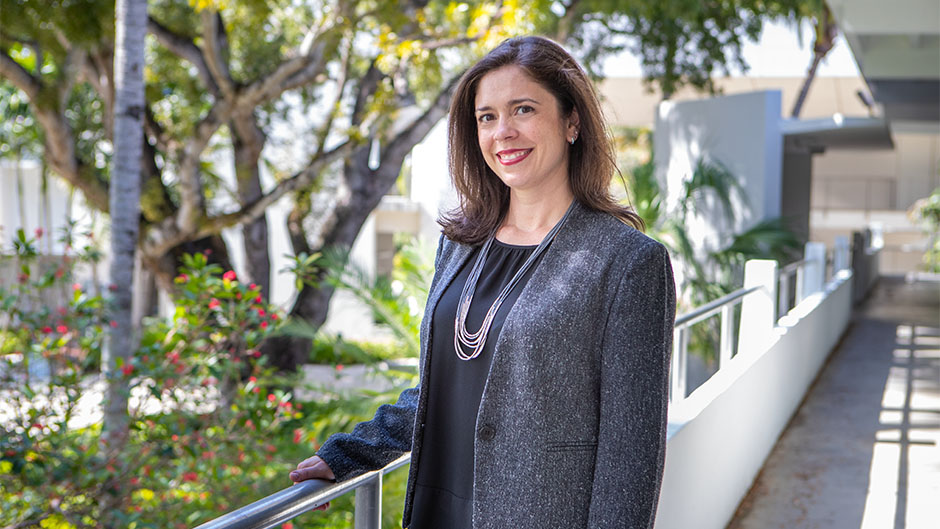- Ph.D., MT-BC
- Assistant Professor of Professional Practice at the Frost School of Music
What drives you as a professor?
My students’ curiosity, and desire to understand concepts more deeply is what drives me. I work closely with music therapy majors and see them in a course almost every semester throughout their undergraduate career. It is amazing to watch them grow, develop, and mature in their musical, clinical, and personal skills. I also appreciate their thoughtfulness and passion for the work.
What is your teaching philosophy?
I aim to foster my students’ development in a way that empowers critical thinking, depth and integration of knowledge, and curiosity. I believe that knowledge and skills are constructed over time; thus, I value the experiences students bring to their learning and believe it can inform their growth, so I help them make connections between their experience and new knowledge. There are different ways both to learn and to assess learning; I strive to provide varied learning opportunities and multiple types of assessments for my students.
How do you engage your students in the classroom?
I teach all my core courses in a flipped classroom model, meaning my lectures are prerecorded, so students come to class not only having completed the reading but also having watched the lecture. This affords us class time to review material, do small group work, complete role play simulations, and watch clinical video examples—whatever best suits the topic. All the courses I teach are well suited for this approach. One advantage of the flipped classroom is that students can’t not engage because our in-class work is so participatory. I also try to build in multiple ways for students to be engaged, so they do not feel they can only participate if they raise their hands and talk in front of the whole class. For example, most class periods start with a three- to five-minute writing activity, where students respond to a question or prompt on the day’s topic. Or I may have students discuss a topic with the person sitting next to them for a couple of minutes.
Do you conduct research and, if so, do you involve undergraduate students in your research?
Yes, my primary research line focuses on developing a music intervention to help preschoolers who are neurodevelopmentally at risk to practice and learn how to self-regulate their emotions. I just finished running a study at a local Head Start facility last fall and will be analyzing the data this spring and preparing the manuscript. I do have an undergraduate student assisting me. We were connected by the Office of Undergraduate Research and Community Outreach and it has been a great experience—hopefully for both of us! I hope to continue involving undergraduates in my research.
What is your advice for someone thinking of studying music therapy?
If I were to give my students one piece of advice, it would be to keep learning. Commit to being a lifelong learner. This can happen in so many ways, through reading, learning from our clients, participating in continuing education opportunities, earning an advanced degree, completing a specialty training, and more. This will help you grow personally and professionally and will keep you engaged in the important work you will be doing.

